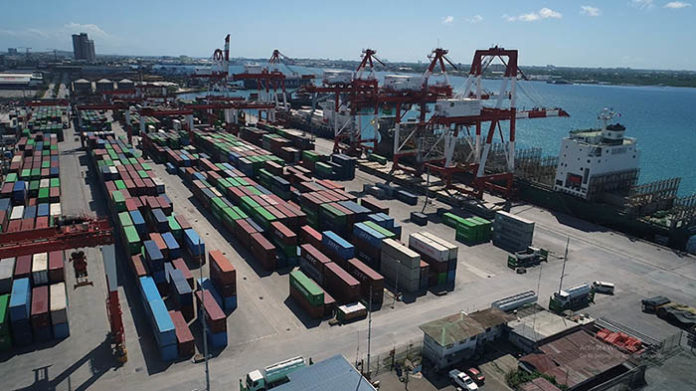-
The Cebu Port Authority (CPA) has issued enhanced protocols during tropical cyclones and typhoons
-
CPA MC 05-2022 provides CPA’s policy to provide, promote, and maintain a safe and environment-friendly port, port facilities, passable navigable waters, and continuity of service in a post-disaster or calamity scenario
-
MC 05-2022 took effect immediately after its publication on August 24 and 25
The Cebu Port Authority (CPA) has enhanced its typhoon safety protocols to ensure safety at ports and continuity of service in a post-disaster or calamity scenario.
One of the enhanced protocols under CPA Memorandum Circular No. 05 series of 2022 (MC 05-2022) call for port operations to resume immediately or within 24 hours in areas where the tropical cyclone warning system has been lifted by the Philippine Atmospheric, Geophysical and Astronomical Services Administration (PAGASA).
The order, which took effect immediately after its publication on August 24 and 25, said it is imperative to enhance and institutionalize the existing policy on port protocols during tropical cyclones affecting Cebu “to prevent casualty to port users, vessel’s crew, damage to ports, port facilities including any and all ongoing infrastructure projects, channel bridges, vessels, private properties, hazards to navigation, environmental pollution and other adverse effects.”
MC 05-2022 noted the Philippines, located along the typhoon belt of the Pacific Ocean, is visited yearly by an average of 20 or more tropical cyclones, some of which develop into typhoons and super typhoons that can cause massive flooding, destruction, and death.
The order applies to the following:
- Ports under administration and control of CPA, including ports that are privately operated under a lease contract or by virtue of a memorandum of agreement with CPA and/or permit to operate issued by CPA
- Other private ports duly registered and accredited with CPA that are within the territorial jurisdiction of the port authority, including ports administered, managed, or owned by local government units
- Foreign and domestic vessels, including decommissioned, derelict, or other inactive or idle vessels at berth, moored in ports or at anchor at the designated anchorage areas and graving harbors
- Other port users
Exempted from the policy are vessels in distress or under state of emergency when life or property is endangered, and moored and active power barges that are owned, operated, or contracted by the National Power Corp. for the production of electrical power.
Under MC 05-2022, it will be the duty and responsibility of all concerned to monitor the weather through PAGASA updates on weather conditions, particularly tropical cyclone advisories/bulletins, tropical cyclone warnings for shipping, and forecasts of storm surges and other warnings.
All persons should comply with all lawful orders given by an officer or security guard of, or acting for, CPA and/or private ports for the purpose of safety and security, among other reasons.
All persons at ports and port facilities should also be primarily responsible for their own safety.
All of CPA’s accredited private ports and cargo-handling service providers should implement a risk reduction and disaster management plan and business continuity plan or its equivalent for disaster resilience and continuity of port operations and services.
The master of every vessel should comply with instructions given by CPA relative to the berthing, mooring, and anchoring of vessels. The decision and responsibility to ensure safe movement of the vessels and safety of its crew, meanwhile, is still with the vessel master and the registered owner/operator of the vessel.
No vessel while berthed at a pier or wharf should be left without any authorized personnel and competent officer who can move the vessel when required to do so.
No non-propelled lighter or barge should be allowed to berth at the pier or wharf without written permission from CPA and without any standby tugboat to move the lighter or barge when required to do so.
Moreover, tugboats should not leave their barges or lighters while at berth, otherwise CPA will cause their removal at the owner’s expense.
MC 05-2022 also provides actions to be taken before the storm makes landfall, the specific guidelines and responsibilities that will be triggered when the storm warning signals are raised by PAGASA, and the actions and reports to be submitted after the tropical cyclone or storm has passed.
When a more than 3-meter-high storm surge is imminent in the affected areas based on PAGASA’s storm surge forecast and warning, or as the actual situation may be, all persons in the port, port facilities and the like should urgently and temporarily evacuate at the safest and quickest way to a high safe ground and/or concrete reinforced multi-story buildings until the storm surge warning is lifted. Skeletal workforce will immediately return to the workstation/workplace if safe to do so.
Violation of any of the provisions of MC 05-2022 will be subject to fines and penalties under CPA’s General Port Rules and Regulations. CPA also reserves the right to pursue other legal remedies when deemed necessary.– Roumina Pablo
RELATED READ:





